Peter Krafft
Communication Topologies Between Learning Agents in Deep Reinforcement Learning
Feb 16, 2019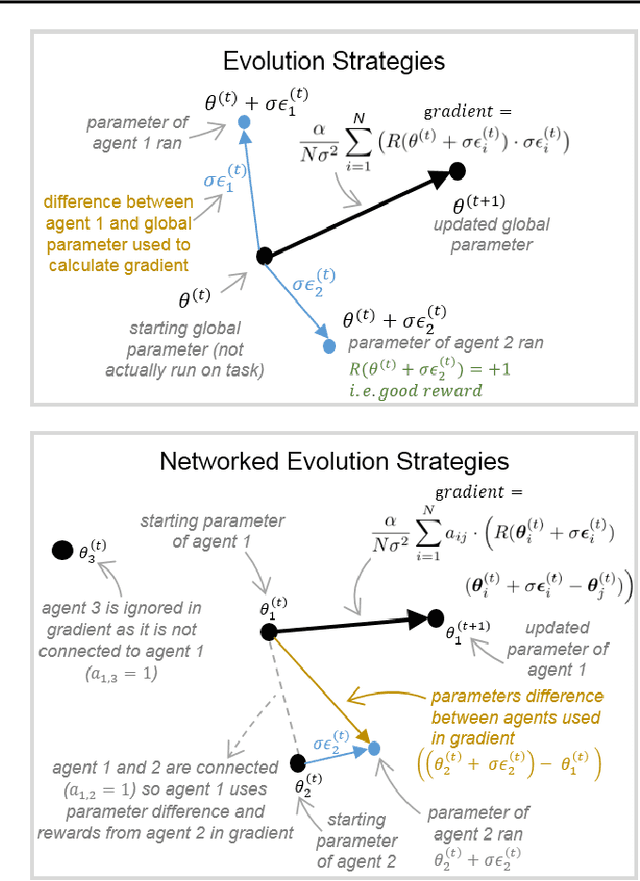
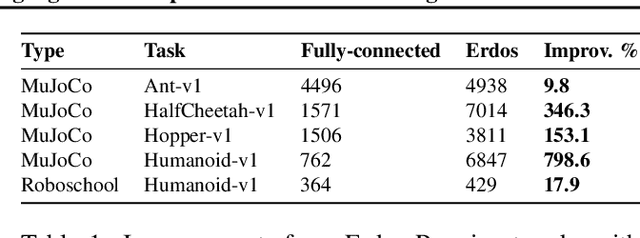
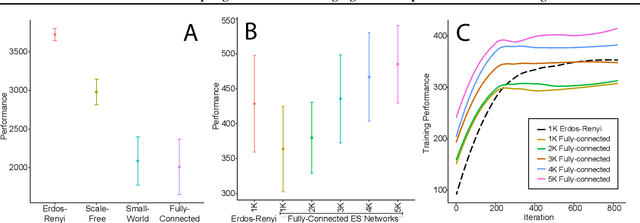
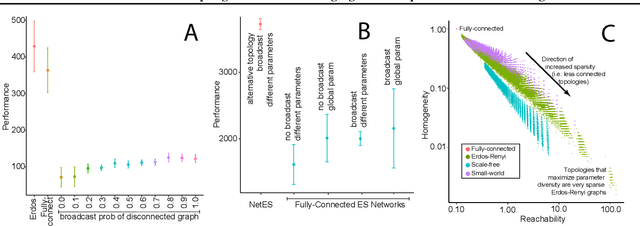
Abstract:A common technique to improve speed and robustness of learning in deep reinforcement learning (DRL) and many other machine learning algorithms is to run multiple learning agents in parallel. A neglected component in the development of these algorithms has been how best to arrange the learning agents involved to better facilitate distributed search. Here we draw upon results from the networked optimization and collective intelligence literatures suggesting that arranging learning agents in less than fully connected topologies (the implicit way agents are commonly arranged in) can improve learning. We explore the relative performance of four popular families of graphs and observe that one such family (Erdos-Renyi random graphs) empirically outperforms the standard fully-connected communication topology across several DRL benchmark tasks. We observe that 1000 learning agents arranged in an Erdos-Renyi graph can perform as well as 3000 agents arranged in the standard fully-connected topology, showing the large learning improvement possible when carefully designing the topology over which agents communicate. We complement these empirical results with a preliminary theoretical investigation of why less than fully connected topologies can perform better. Overall, our work suggests that distributed machine learning algorithms could be made more efficient if the communication topology between learning agents was optimized.
How to Organize your Deep Reinforcement Learning Agents: The Importance of Communication Topology
Nov 30, 2018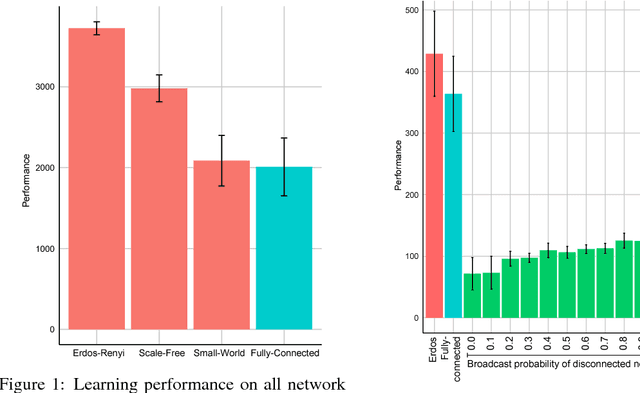

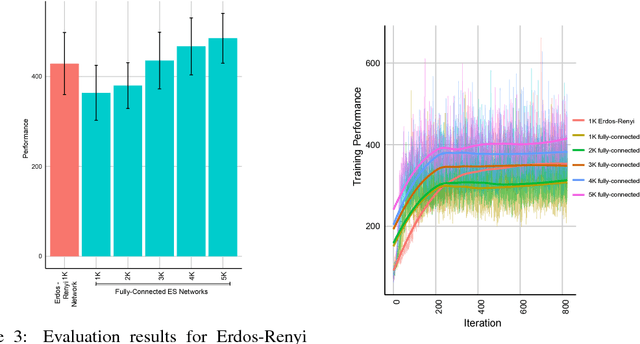
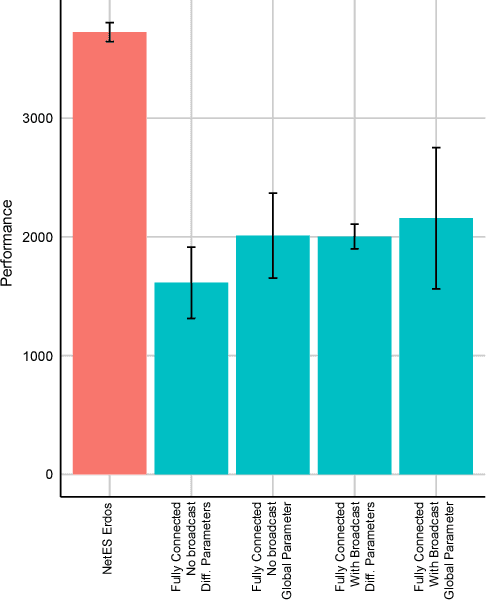
Abstract:In this empirical paper, we investigate how learning agents can be arranged in more efficient communication topologies for improved learning. This is an important problem because a common technique to improve speed and robustness of learning in deep reinforcement learning and many other machine learning algorithms is to run multiple learning agents in parallel. The standard communication architecture typically involves all agents intermittently communicating with each other (fully connected topology) or with a centralized server (star topology). Unfortunately, optimizing the topology of communication over the space of all possible graphs is a hard problem, so we borrow results from the networked optimization and collective intelligence literatures which suggest that certain families of network topologies can lead to strong improvements over fully-connected networks. We start by introducing alternative network topologies to DRL benchmark tasks under the Evolution Strategies paradigm which we call Network Evolution Strategies. We explore the relative performance of the four main graph families and observe that one such family (Erdos-Renyi random graphs) empirically outperforms all other families, including the de facto fully-connected communication topologies. Additionally, the use of alternative network topologies has a multiplicative performance effect: we observe that when 1000 learning agents are arranged in a carefully designed communication topology, they can compete with 3000 agents arranged in the de facto fully-connected topology. Overall, our work suggests that distributed machine learning algorithms would learn more efficiently if the communication topology between learning agents was optimized.
Improved Learning in Evolution Strategies via Sparser Inter-Agent Network Topologies
Nov 30, 2017
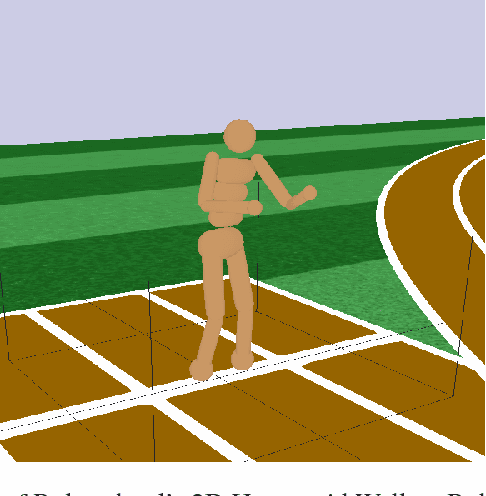

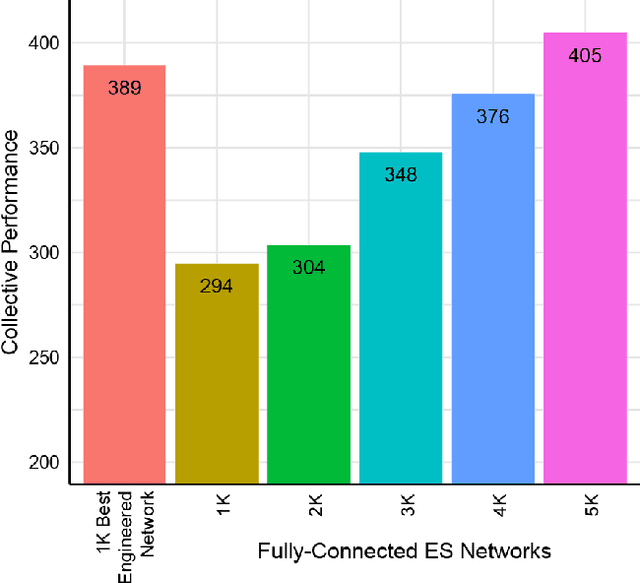
Abstract:We draw upon a previously largely untapped literature on human collective intelligence as a source of inspiration for improving deep learning. Implicit in many algorithms that attempt to solve Deep Reinforcement Learning (DRL) tasks is the network of processors along which parameter values are shared. So far, existing approaches have implicitly utilized fully-connected networks, in which all processors are connected. However, the scientific literature on human collective intelligence suggests that complete networks may not always be the most effective information network structures for distributed search through complex spaces. Here we show that alternative topologies can improve deep neural network training: we find that sparser networks learn higher rewards faster, leading to learning improvements at lower communication costs.
 Add to Chrome
Add to Chrome Add to Firefox
Add to Firefox Add to Edge
Add to Edge